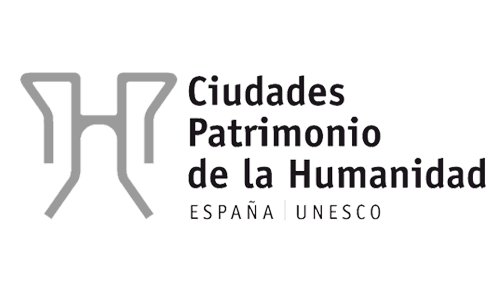San Lazaro/Rabo de Buey Aqueduct
It gets its name from a chapel devoted to this saint which was demolished halfway through the 20th century. This aqueduct allowed covering the Albarregas valley with a network of channels that brought water coming from underground springs and streams located north of the city and it is still completely preserved in most of its stretches.
The channel was perched in a place called 'Rabo de buey' where a reservoir was placed to purify the water. Today we can find a small siphon house from the 19th century. It was the longest of the two aqueducts of the Colony that were found and it was more than one kilometre and a half long. Because of its construction, it also seems the oldest one, similar to the construction of the buildings for spectacles.
Of all the arches in this aqueduct, only the cutwaters of some of the piers are left as well as, especially, the three pillars that we see next to the base of a semicircular arch made of bricks and the two semicircular arches based on beautiful granite voussoirs in which granite ashlars and bricks with concrete serving as the core, are sensationally combined.
Underneath the impressive arches that are preserved of this aqueduct, you could find the road which would split a bit further in three directions: towards Cordoba, Toledo and Zaragoza.
In the 6th century the Roman aqueduct was not used. Instead of restoring it, the town hall preferred building a new one which has been completely preserved.
Finally, we can also see the remains of some Roman thermae which were built only a few metres from the aqueduct.
It gets its name from a chapel devoted to this saint which was demolished halfway through the 20th century. This aqueduct allowed covering the Albarregas valley with a network of channels that brought water coming from underground springs and streams located north of the city and it is still completely preserved in most of its stretches.
The channel was perched in a place called 'Rabo de buey' where a reservoir was placed to purify the water. Today we can find a small siphon house from the 19th century. It was the longest of the two aqueducts of the Colony that were found and it was more than one kilometre and a half long. Because of its construction, it also seems the oldest one, similar to the construction of the buildings for spectacles.
Of all the arches in this aqueduct, only the cutwaters of some of the piers are left as well as, especially, the three pillars that we see next to the base of a semicircular arch made of bricks and the two semicircular arches based on beautiful granite voussoirs in which granite ashlars and bricks with concrete serving as the core, are sensationally combined.
Underneath the impressive arches that are preserved of this aqueduct, you could find the road which would split a bit further in three directions: towards Cordoba, Toledo and Zaragoza.
In the 6th century the Roman aqueduct was not used. Instead of restoring it, the town hall preferred building a new one which has been completely preserved.
Finally, we can also see the remains of some Roman thermae which were built only a few metres from the aqueduct.
Hours and Fees
Location







